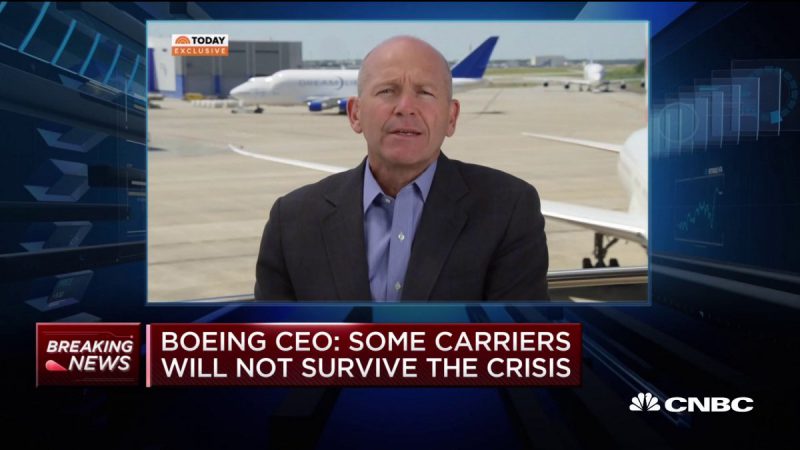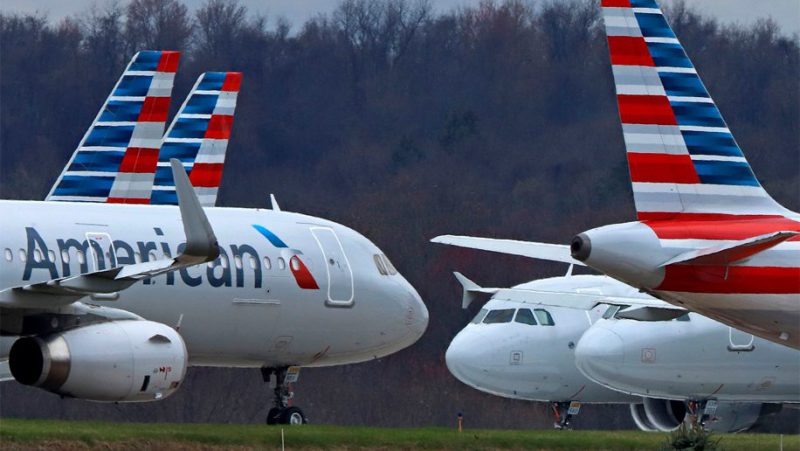Travel CEOs Talk the Future of Travel Post-COVID-19
What industry leaders are saying about the impact of coronavirus, lockdowns and when travel will rebound
May 14, 2020


The first quarter 2020 will go down in the history books because of the devastation of the coronavirus pandemic, not only in terms of widespread sickness and personal tragedy, but also because of its crippling impact on the global economy and in particular on travel.
Data from STR shows hotel occupancy improving slightly in May, but still under 30 percent. In April, digital flight information resource OAG reported airline passenger traffic was slowly rebounding from March lows, when load factors were at 10 percent. Airlines are beginning to add capacity back into the system in May, but only as travel restrictions ease, OAG notes.
No one could have predicted back in January where this road would lead, and even now the future is still quite murky. One thing everyone seems to agree on however: The road back will be longer and more arduous than we ever could have imagined.
As the quarter ended during their companies’ earnings calls, the heads of leading travel businesses have shared with analysts, stockholders and the traveling public the full scope of damage the COVID-19 emergency has done – and the various ways in which the industry is responding. Here’s a sampling of what CEOs and other leaders from all sectors of travel are saying about the turbulence the virus has caused in the industry and how the future of travel may be changed by it.
Booking Holdings
One of the most personal stories came from CEO Glenn Fogel of Booking Holdings, which includes brands such as Booking.com, Priceline, Agoda, Kayak and OpenTable. In April, Fogel disclosed in an SEC filing and in a memo to employees that he had tested positive for coronavirus.
During an interview on CNBC’s “Squawk on the Street,” Fogel said, “I feel fine. I feel great. I haven’t had a symptom in many, many days.” However, he added having coronavirus has made him more sympathetic toward the struggles so many people are facing. “I totally feel for everybody. Having been through this myself, I know this is nothing to laugh about.”

In a more recent earnings call, Fogel said travel will recover, although the rebound will be measured in years, not quarters. The speed of the recovery in travel will depend on factors like the development of a vaccine and treatments, and how quickly people regain confidence in travel.
Nevertheless, Fogel is optimistic about the eventual return of the travel industry. “I don’t think the world is going to be hugely different once we get past this,” he said. “In the end, people want to travel, people are willing to supply accommodations. And I don’t see that there’s going to be a great change in the long run.”
InterContinental Hotels Group
After turning in a solid performance in the first two months of 2020, InterContinental Hotels Group reported occupancy levels dropped to “historic lows” in March and April, due to travel restrictions and social distancing measures taking hold around the world.
IHG reported first quarter global revenue per available room, or RevPAR – a widely cited performance measurement in the hospitality industry – declined by 25 percent, driven by a 55 percent decline in March. The company added they anticipate April to be down by around 80 percent. In the US, IHG’s biggest market, the levels of RevPAR decline among the group’s portfolio of 3,750 mainstream hotels has not been as steep as the industry averages.
“Covid-19 represents the most significant challenge both IHG and our industry have ever faced,” said Keith Barr, IHG’s chief executive officer. “We anticipate continued disruption to travel in the months ahead, and forward visibility on the timing and shape of improvements in demand remains very limited.” However, he added, “we are taking all necessary actions to manage through the uncertainties and challenges facing our industry.”
Barr said, “IHG’s response to COVID-19 is centered on remaining true to our purpose and values.” As an example, he pointed to the hotel group’s involvement in housing frontline workers, especially in hard-hit areas like New York City.
Marriott International
“This is by far the most significant crisis ever to impact our business,” said Marriott’s CEO Arne Sorenson during the company’s quarterly call May 11. “For a company that is 92 years old and has weathered the Great Depression, World War II and numerous natural disasters around the world, that is saying something.”

The company reported first quarter 2020 RevPAR tumbled 22.5 percent worldwide – 30.4 percent outside North America and 19.5 percent in North America. The second quarter continued the steep decline, according to Sorenson. “As the pandemic moved around the world, we saw global RevPAR fall sharply and, in April, worldwide RevPAR declined approximately 90 percent,” he said. “Currently, roughly a quarter of our worldwide hotels are closed.”
Notwithstanding, Sorenson sounded a cautious note of optimism. “The glimmer of good news is that overall, negative trends appear to have bottomed in most regions around the world.” He pointed to improving trends in Greater China, adding, “We have seen examples of demand starting to come back in other areas of the world as well.”
As global trends start to stabilize, the company is monitoring data such as booking and cancellation information, as well as macroeconomic indicators. “We are also looking at data around COVID-19 testing and cases, and government regulations, all with an eye toward ramping up our business in a thoughtful way as restrictions are lifted and market conditions improve.”
Communication with guests is the key component for Marriott’s recovery plan, Sorenson said. One focus is leveraging the Bonvoy loyalty program to roll out region-specific marketing strategies in phases as different customer segments and levels of demand return. “Another key component of our recovery plan is communicating with our guests and associates about our focus on health and safety, and giving them the confidence they need to travel and stay with us,” Sorenson said.
Finally, Sorenson warned, “The recovery is not going to happen uniformly across all regions, and it is not going to occur overnight. It may take longer than any of us would like, and we will likely operate a bit differently going forward. But we have taken the steps necessary to position the company to manage through this crisis successfully,” he concluded. “And travel will rebound.”
Hilton
Hilton too saw a dramatic decline in revenue per available room, dropping 57 percent as the virus spread across Europe and the US, on the heels of a 23 percent decrease through February excluding Asia Pacific. However, Chris Nassetta, Hilton’s president and CEO, cautioned “We do not think our first-quarter results provide clear insight into the current environment given the timing of the pandemic, and we expect a much more dramatic impact on our second quarter results.”
Nassetta continued, “With travel at a virtual standstill, we expect systemwide RevPAR declined roughly 90 percent in April. With that being said, we are starting to see glimmers of travel resuming and economies reopening. In China, nearly all 150 hotels that have been closed due to the pandemic have since reopened. In the US and Europe, we’re starting to see sensible and stage reopenings of economies. We think temporary hotel suspensions have plateaued.”
Looking ahead to the rest of the year, Nassetta went on to note that “global occupancy levels have gone from a low point of 13 percent to 23 percent currently. Assuming we start to see mobility and we don’t have a significant recurrence, demand should slowly rebuild in the third quarter.”
The call also outlined Hilton’s partnership with American Express to donate room nights to house to frontline medical professionals in the US, and its work with World Central Kitchen, a nonprofit organization which prepares meals for those in need following natural and economic disasters, such as the COVID-19 pandemic. Currently WKC is providing food and volunteer manpower in more than a dozen cities globally, including for frontline responders at three Hilton properties in the US.
“A full recovery will take time,” Nassetta continued, “and it could take several years to return to the hotel demand levels we experienced in 2019.”
Boeing
As the global coronavirus crisis slows economic activity and governments severely restrict travel, the latest IATA forecast projects full-year passenger traffic to be down 48 percent this year compared to 2019, as David Calhoun, Boeing’s president and CEO, explained during the company’s April 29 earnings presentation.
“Airlines are cutting back operations dramatically,” Calhoun told analysts. “As they assess their businesses, they’re making difficult decisions that result in grounding fleets, deferring airplane orders, postponing acceptance of completed orders, and slowing down or stopping payments.”
As the COVID-19 crisis roils the industry, Calhoun said he expects airlines to reevaluate their fleet planning strategies. “More than 2,500 aircraft with 20-plus years of service were in active service prior to the crisis,” he noted, which may mean airlines are likely to require new aircraft as they standardize and streamline their fleets. “Replacements will not be uniform as airlines will focus on the oldest and least efficient to retire,” Calhoun said. “Some airlines have already made announcements to this effect.”
Calhoun told analysts he believed the fundamentals of the aviation industry “remain intact.” However, he cautioned, “We believe this industry will recover but it will take two to three years for travel to return to 2019 levels and it will be a few years beyond that for the industry to return to long-term growth trends.”
In a separate interview with NBC’s Today Show, Calhoun reiterated predictions about the near-term impact on aviation. “There will definitely be adjustments that have to be made on the part of the airlines,” he said, even warning that the crisis could lead to a major carrier going out of business.

Calhoun said he shares the concerns of investors like Warren Buffet about the upheaval in the industry. Nevertheless, he said he rejects Buffet’s assertion that the current turmoil means a fundamental change for aviation going forward.
“Near-term for me doesn’t mean a few months. I believe it’s three full years before we return to the traffic levels that we had just in 2019, and then probably another two before we begin to return to the growth rates that we used to have,” Calhoun said. “But I still believe in the future of the industry.”
American Airlines
May capacity at American Airlines is expected to be down 80 percent, and American anticipates capacity to be down 70 percent in June, according to Vasu Raja, senior vice president of strategy, on the carrier’s April 30 first quarter earnings call.

However, Raja said American is not planning to reduce its hubs, and instead is pursuing fleet simplification as a way to preserve the airline. Having fewer aircraft types, he said, will reduce costs related to parts and tooling. It will also make the airline nimbler, enabling American to more easily move aircraft to respond to demand.
“We do not plan for mass scaled hub closures; in fact, our hubs are a massive asset,” Raja said. American’s largest hub is Dallas/Fort Worth, while others are in Charlotte, New York, Chicago, Miami, Los Angeles, Phoenix, Philadelphia and Washington.
American’s CEO Doug Parker stressed the uncertainty of the current environment. “Industry revenues have fallen an estimated 95 percent year over year in April. And while no one has a perfect crystal ball, I think we all expect that recovery will be slow and demand for air travel will be suppressed for quite some time.”
Parker cited three critical issues that any airline must manage in the COVID-19 crisis. “First, ensuring the safety and comfort of the team members and customers; second, maintaining ample liquidity to ride through a sustained crisis; and third, planning for an uncertain future.”
In response, Parker said American is making decisions about how to streamline the airline that emerges on the other side of the pandemic. “Perhaps the most difficult thing for airlines to do at this time, is to properly plan for the future,” a process that is complicated by “the extreme uncertainty regarding the anticipated level of demand for air travel, not just for the next few months, but for the next few years.”
Finally, Parker concluded, “The uncertainty about the future weighs on everyone and for a good reason. There’s no way to overstate the gravity of the situation for the airline industry and difficult decisions lie ahead for all of us.”
The carrier reported a $2.2 billion net loss in the first quarter, compared with a net profit of $185 million during the first quarter of 2019.
United Airlines
Despite reported moves to downsize staff, in the long run, United Airlines’ management is expressing guarded optimism about returning to profitability, albeit as a smaller airline.
However, the carrier’s plans for a post-COVID-19 recovery are looking at a range of possibilities, including a worst-case scenario in the event of no demand growth for the rest of the year, according to Scott Kirby, the carrier’s president, on the company’s first quarter earnings call. “We aren’t projecting that and certainly hope it’s better than that, but we are planning for the possibility,” Kirby said, who will replace Oscar Munoz as CEO later this month.
The carrier’s passenger revenue dropped 19 percent year-over-year to $7.1 billion, with a net loss of $1.7 billion for the quarter, compared with a net income of $292 million in the first quarter of 2019. It was United’s first quarterly loss since the first quarter of 2014.
As of the April 1 earnings call, Kirby noted, “there are no signs of meaningful recovery.” Unless the results improve, United is preparing for the possibility that net revenue stays near zero for the rest of this year and into 2021. Such a bleak outlook would likely involve taking “extremely painful” actions in terms of its employees, Kirby said.
United reported after Sept. 30, when federal aid no longer prohibits furloughing employees, it has a “plan on the shelf” to reduce cash burn to $20 million per day if there is no demand recovery. Those cuts will have to come largely from United’s payroll, said Kirby.
Nevertheless, the carrier is reporting what it calls “bright spots” in passenger traffic. As a result United has begun a limited expansion of international service in the month of May, and even contemplating a return to China by June.
IAG
IAG, the owner of British Airways, Iberia, Aer Lingus and Vueling is predicting that it will be 2023 before passenger traffic levels return to that of 2019.
In its quarterly presentation, IAG chief executive Willie Walsh said “We do not expect passenger demand to recover to the level of 2019 before 2023 at the earliest. This means group-wide restructuring is essential in order to get through the crisis and preserve an adequate level of liquidity. We intend to come out of the crisis as a stronger group.”
British Airways has already announced the potential loss of 12,000 jobs – almost one third of its workforce.
IAG is now planning to ask for assistance for British Airways from the UK Government’s Coronavirus Corporate Finance Facility, although the amount has not yet been disclosed. In Spain, it has already accessed funding for Iberia and Vueling. IAG also says it will defer delivery of 68 aircraft.
On the positive side, IAG is planning a “meaningful return to service in July this year,” although it says “these plans are highly uncertain and subject to the easing of lockdowns and travel restrictions.”
Tom Otley contributed to this report




